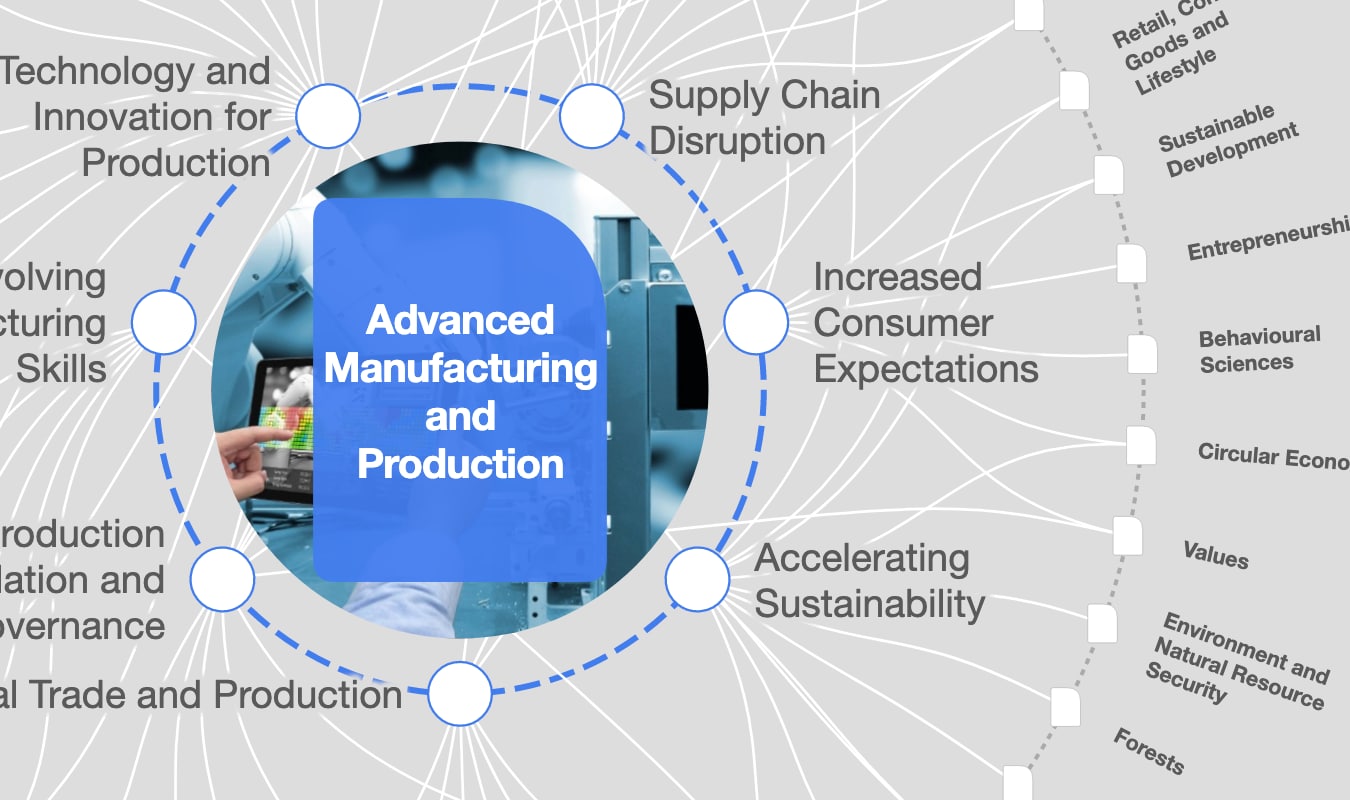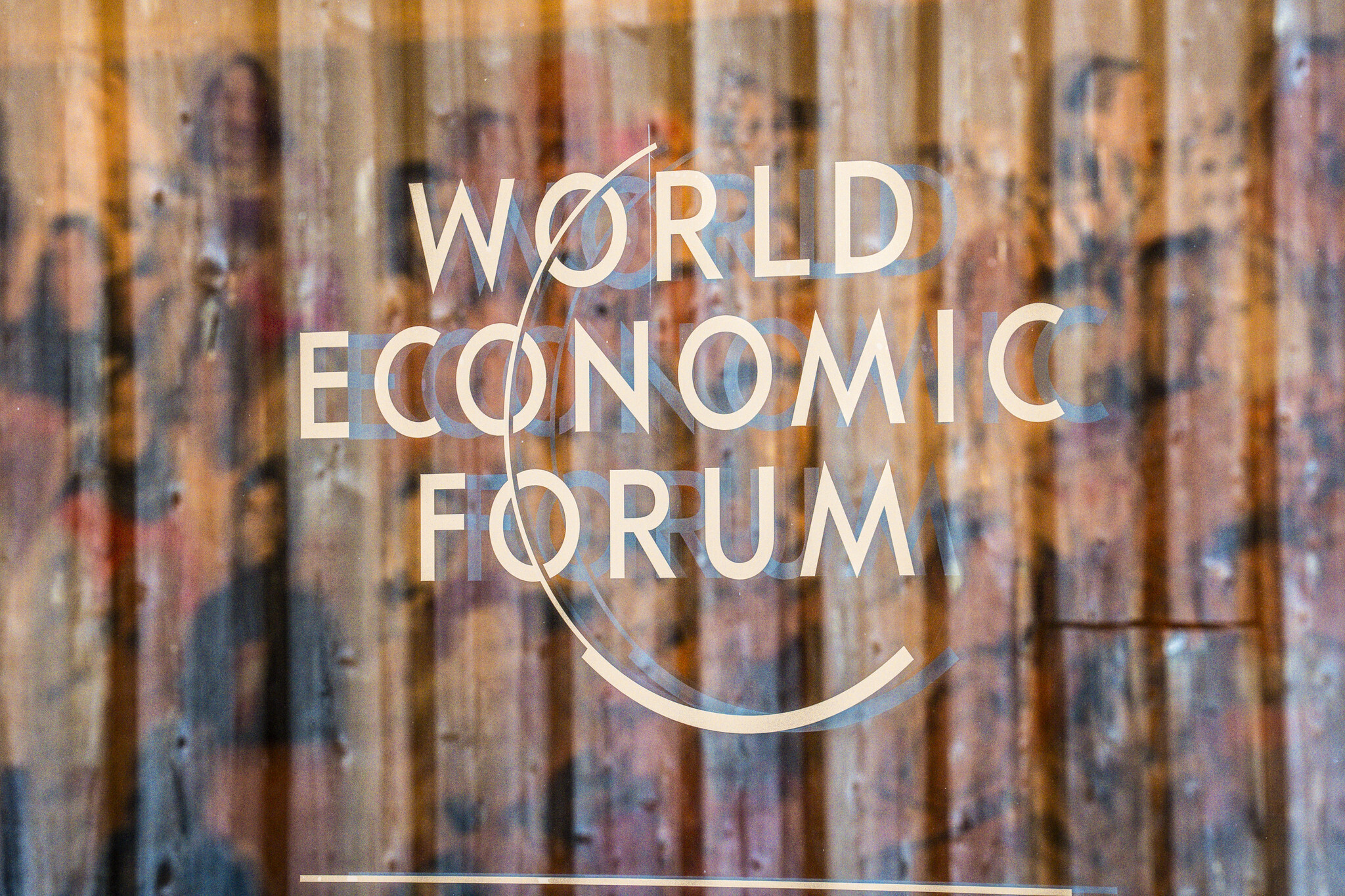Manufacturing reimagined: from improved productivity to profitable growth

Image: Remy Gieling/Unsplash
- Manufacturers are revamping their growth strategies as COVID-19 continues to cause uncertainty.
- Maximizing productivity is no longer enough.
- Instead, they should look to Fourth Industrial Revolution technologies to increase resilience, sustainability and growth.
Global disruptions and instabilities, supply-chain breakdowns, and heightened customer demand for digital-first experiences are speeding the Fourth Industrial Revolution (4IR) forward. While the COVID-19 pandemic continues to drive significant uncertainty, manufacturers are revamping their growth strategies with a renewed appreciation for how operating models determine strategic outcomes.
Maximizing productivity is no longer enough. To support any hope of lasting competitive advantage, companies know their operations must achieve more than ever before: stronger resilience, faster innovation, higher customer satisfaction, more-engaged workforces. And it all needs to happen at once.
That means making the most of digital transformation across the entire manufacturing organization, including support functions. Whether it’s ahead of the digital curve or lagging behind, no manufacturer is immune to the automation revolution that COVID-19 is accelerating. But to truly reimagine manufacturing for a sustainable, digitally-infused future, companies must find pathways that extend value through novel customer experiences, with scalable technology that supports the business goals.
That’s a tall order when the majority of organizations have struggled to prove attractive return on investment and move beyond pilot-testing technology, and have little to show despite efforts to digitally transform. In fact, 74% of companies reported getting stuck in pilot mode in the past year—a sharp increase compared to 56% in 2019.
What do the companies representing the other 26% have in common? They took bold steps to embrace agility and innovation, integrating transformative 4IR technologies across multiple facets of their operations. These frontrunners comprise the Global Lighthouse Network, which now includes 54 lighthouses representing 4IR leaders in advanced manufacturing.
They represent players in sectors including semiconductors and automotive, consumer packaged goods, and medical products, and even process industries such as mining, and range in size from established global blue-chips to businesses with fewer than 100 employees. They also include both brownfield sites that have been upgraded, as well as new greenfield builds. Their success shows that regardless of a business’s size, digital transformation is possible and the resulting growth is sustainable.
What is the World Economic Forum doing to help the manufacturing industry rebound from COVID-19?
Several factors play crucial parts in the successful adoption of 4IR.
Shift from an atomistic to a holistic approach
Technological advancements have accelerated our ability to “test and learn.” Many organizations, however, have found themselves stuck in this phase. The activation of 4IR technology can’t occur in a silo: business processes, management systems and people systems will continue to evolve together as they are integrated with a digital system. Therefore, engaging the broader organization is how true digital transformation occurs.
Lighthouses move with speed beyond individual use cases, integrating several together into broader applications that compound the collective impact. The testing and learning process is fast: just four to six months is enough time for a minimal viable product to show real value. Then the team scales what works and scraps what doesn’t.
At a 60-year-old plant in the US, Schneider Electric implemented 4IR technologies such as augmented reality, remote monitoring and predictive maintenance to achieve a complete end-to-end transformation of its operations. Deployment of new software has increased visibility into operations, reducing unplanned machine downtime and eliminating 90% of paperwork. The changes start with the supplier network and reach end-to-end through to customers, improving customer satisfaction by 20%, raising demand forecast accuracy by 20%, and reducing energy costs by 26%.
These changes do require targeted investment. While initial use cases can still be hosted on legacy IT infrastructure, for example, more advanced ones require capabilities that most legacy infrastructure is not able to provide. But advances in analytic tools often mean that the additional infrastructure required is relatively modest. Moreover, scaling successfully usually goes hand-in-hand with the establishment of a clear governance structure built on a foundation of capabilities that brings together pockets of skills from multiple parts of the organization. These human factors matter at least as much as the hardware and software decisions the company makes.
Keep the workforce at the core of digital transformation
Indeed, contrary to headlines about robots replacing human workers, the opposite is true—the adoption of 4IR technologies actually creates more new jobs. What changes are the tasks workers undertake. This means that the main effect of increasing automation is not to replace jobs, but to redefine them—changing the skills and capabilities workers need to perform them.
Ways of working are also evolving at lighthouses. The imperative for rapid development and deployment of new solutions requires companies to accelerate the adoption of agile methodologies, using small, cross-functional teams and rapid, iterative processes. The critical link lies in companies’ ability to upskill talent at the same scale and pace as technology.
The skill profiles of their entire organizations will likely shift. For example, advanced manufacturing roles that require a combination of deep domain expertise and digital skills—such as analytics translators or product owners—would change a company’s long-term talent strategy, necessitating the need for in-house capability building. The most successful manufacturing companies have defined learning journeys for different roles, and encourage employees to go above and beyond those journeys through continuous learning and exploration of areas of interest.
Strategies like tiered pathways for upskilling ensure workers remain connected, integrated, and directly involved with transformations, while equipping workers with the expertise needed to contribute to future innovation.

Define objectives for bottom-line impact, eco-efficiency
While industry leaders recognize a need to reduce the environmental footprint of their organization, they’ve struggled to define actions with a clear business case for investments to do so. Applications of 4IR technologies are already improving our response to global challenges, such as climate change and pandemics. In addition to reporting productivity increases of up to 90%, lead-time reduction of up to 80%, and a halving of time-to-market, lighthouses also see energy efficiency improvements of up to 50%.
Recent advances in manufacturing that combine technological innovations with emergent business models provide an opportunity for companies to build a carbon-neutral manufacturing ecosystem—while also driving profitable growth. Many of these increased efficiencies work towards reducing waste, resource consumption, and emissions.
The consumer-goods manufacturer Henkel aims for “climate-positive” sustainability, with a goal of tripling its value creation in relation to its environmental footprint by 2030. The company’s efforts engage a data-driven strategy and digital end-to-end platform based on advanced cloud technology. It connects all locations worldwide in real-time to form an ecosystem that has led transformed its factories to be more integrated, cost-effective, sustainable, and efficient—translating to a sustainability footprint that’s 36% smaller. As a result, Henkel has seen a 10% reduction in processing costs and a 25% reduction in logistic costs.
The Fourth Industrial Revolution is no longer hype: it’s fully here, enabling real gains in productivity, sustainability, agility and speed-to-market. Manufacturers that choose to reimagine their growth strategies by embracing the advances are setting new benchmarks. Those that do not risk falling behind in an uncertain and increasingly threatening competitive landscape.
Don't miss any update on this topic
Create a free account and access your personalized content collection with our latest publications and analyses.
License and Republishing
World Economic Forum articles may be republished in accordance with the Creative Commons Attribution-NonCommercial-NoDerivatives 4.0 International Public License, and in accordance with our Terms of Use.
The views expressed in this article are those of the author alone and not the World Economic Forum.
Stay up to date:
Future of Manufacturing
Related topics:
Forum Stories newsletter
Bringing you weekly curated insights and analysis on the global issues that matter.
More on Forum in FocusSee all
Gayle Markovitz
October 29, 2025








